CHAPTER 2 -- Open Area
This area is a bit like the original Post Oak Savannah. A
Savannah is an open grassland with scattered trees.
Dominating the open area are a few large Post Oaks, Quercus
stellata.
Even in the leafless state, the Post Oak is readily recognizable.
It is
a large tree with an irregular canopy and crooked branches. There
is
often a lot of dead wood in the canopy.
The leaves are distinctive as well,
having one large lobe on each side. Often they are somewhat
cross-shaped.
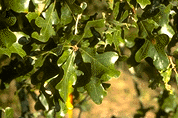
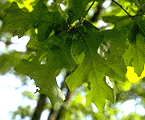
Oak flowers are small, inconspicuous, and wind-pollinated. The
male
flowers are produced in catkins early in the spring when the
leaves are
small.
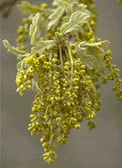
One of the common spring herbs in this area is Chickweed, Stellaria
media. A member of the Caryophyllaceae, it has five petals
which
are so deeply cleft that they look like ten petals.

Spring Beauty, Claytonia virginica, is a delicate,
beautiful
member of our early spring flora. Dainty though the plants may
be,
however, they grow from deep-seated corms which are difficult to
collect for specimens.
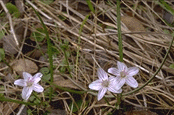
Crow Poison, Nothoscordum bivalve, is probably our most
abundant spring wildflower, and it blooms profusely in the fall
as
well. It is often mistaken for the edible species of wild
onions, but
should be avoided as it is somewhat poisonous. It lacks the
strong
onion or garlic scent of true onions.

Mounds of bright yellow Buttercups (Ranunculus) can be
found in
damp spots.
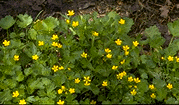
A closer look at one of the flowers reveals the many stamens and
apocarpous gynoecium.

Peppergrass, Lepidium virginicum, is a common weedy
member of
the mustard family. Its oval fruits which are called siliques
can be
used in food as peppery spice.

Winecups (Callirho‘ involucrata) are spring
favorites--nothing
else is quite the same color. Like all members of the Malvaceae
or
Cotton Family, Winecups have monadelphous stamens.
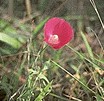
Beneath the calyx is an epicalyx, a collection of bracts. This is
feature common to many members of the family.
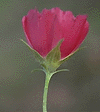
This yellow Evening Primrose (Oenothera laciniata) is a
cousin
of the larger pink Evening Primroses common along roadsides.
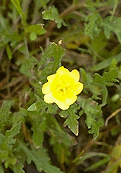
There is a lot of dewberry (Rubus trivialis) in the park,
both
under the trees and in the open. The white flowers are typical
of the
rose family.
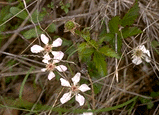
After the petals fall, the developing fruits can be seen.
They get larger..
 ... and larger.
... and larger. 
Each is an aggregate of tiny drupes. Ripe dewberries are
relished
by animals and human snackers alike.
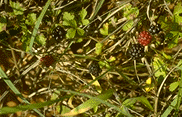
Chapter 3 - Sandy area and Ragweed (achoo!)
Lick Creek Park Field Trip Home Page